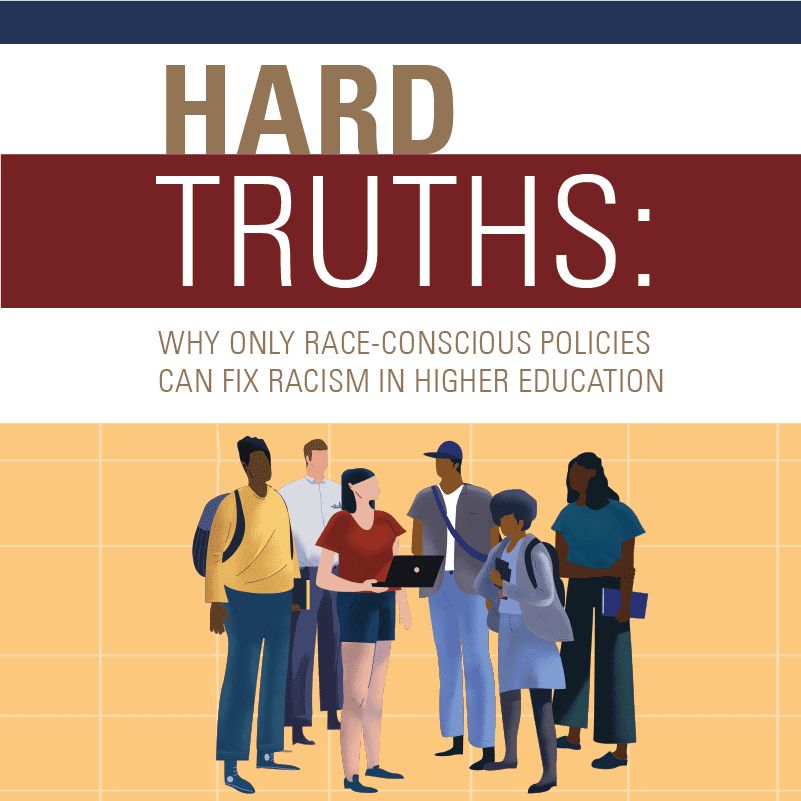Hard Truths
Despite the popular belief that affirmative action gives Black and Latino students an unfair advantage, these students are still…

Despite the popular belief that affirmative action gives Black and Latino students an unfair advantage, these students are still underrepresented at the nation’s selective colleges and at two- and four-year public colleges and universities in the vast majority of states. The truth is, it isn’t enough to just believe that racial inequality is a problem; what policymakers, advocates, and citizens do about it matters most.
Despite the popular belief that affirmative action gives Black and Latino students an unfair advantage, these students are still underrepresented at the nation’s selective colleges and at two- and four-year public colleges and universities in the vast majority of states. The truth is, it isn’t enough to just believe that racial inequality is a problem; what policymakers, advocates, and citizens do about it matters most.
More than 150 years after the 13th amendment was ratified to end slavery, nearly 3 out of 4 Black adults and more than half of White adults describe race relations as “bad,” and that the legacy of slavery still has a considerable impact on Black people in American society.
And more than 3 our of 4 Black adults believe that the United States hasn’t gone far enough in giving Blacks equal rights with Whites; while the same is true for only 1 in 3 White adults.
In this next report in our State of Higher Education Equity, we answer common questions from advocates and policymakers. Questions like:
FOR THE PURPOSES OF THIS REPORT, race-conscious policies in higher education include policies that explicitly address race in the design and provide higher education access, opportunity, or support to students of color and their colleges and universities serving them. While using race-conscious policies can help achieve racial justice in higher education for all students of color, for the purposes of this report, we will focus our data and discussion on Black students, as the data on Black students makes a strong case for why race-conscious policies are necessary.
1. Historically, higher education has used racist policies to exclude students. Therefore, race-conscious policies are necessary to achieve racial justice.
2. Racial inequalities remain, and, in some cases, have worsened because race-conscious policies were cut short, limiting their effectiveness.
3. Policies that rely on substitutions (or proxies) for race, such as income, have not closed gaps in opportunity and outcomes for students of color.
10 Strategies for advancing race-conscious policies that are designed to lead to racial equity in higher Education